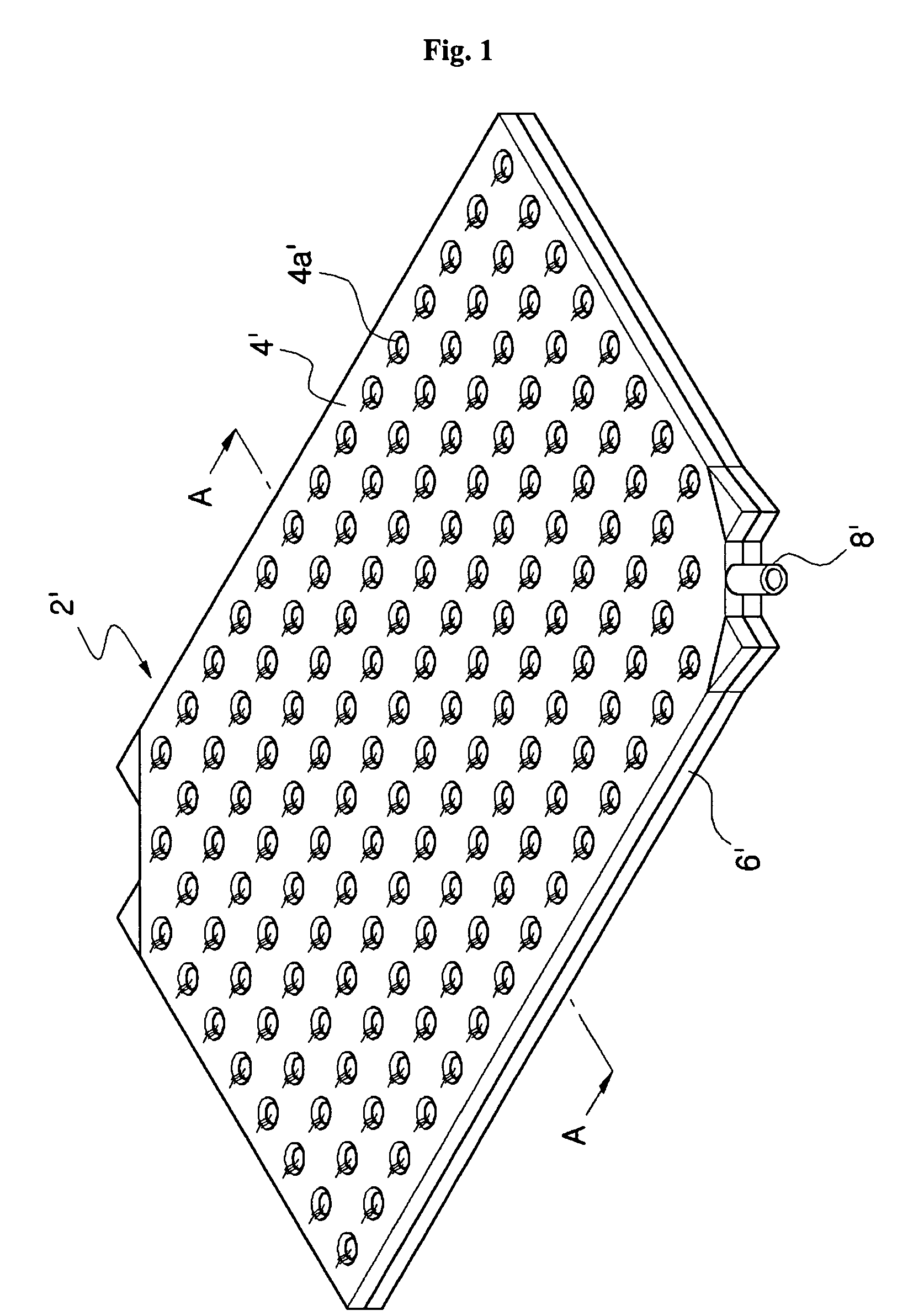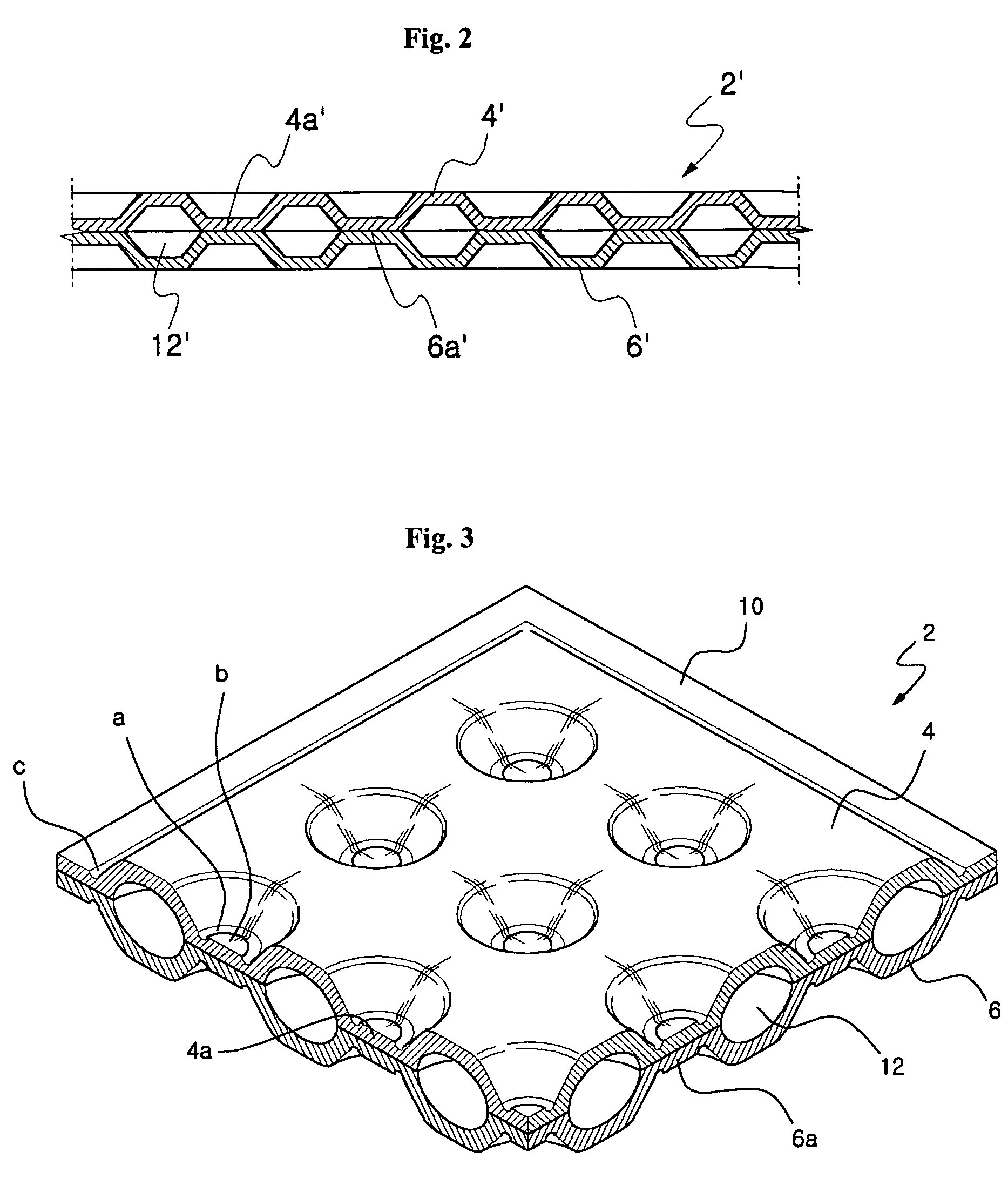Heating system of floating structure including heating panel having round to elliptic inner fluid pathway
a floating structure and heating system technology, applied in lighting and heating apparatus, heating types, heating arrangements, etc., can solve the problems of low thermal efficiency of conventional heating systems, large thermal loss, and difficulty in reducing fuel costs, so as to reduce fuel costs and eliminate complicated piping work. , the effect of high heating efficiency
- Summary
- Abstract
- Description
- Claims
- Application Information
AI Technical Summary
Benefits of technology
Problems solved by technology
Method used
Image
Examples
first embodiment
[0069]FIG. 8 is a cross sectional view illustrating a heating system according to the present invention. As shown in the drawings, a heating system 1 is formed at a lower portion of the heating panel 2 with a thermal insulating layer 18 made of EPS (Expanded Polystyrene) to minimize thermal loss, and provided with a metal plate 20 and a finishing material 22 on the heating panel 2.
[0070]The metal plate 20 is made of steel plate, more preferably aluminum coated steel plate, both of which have a high thermal conductivity. Accordingly, an excellent thermal conductivity of the metal plate 20 improves a heat conducting function of the heating panel 2, enhancing the heating efficiency. Furthermore, the metal plate 20 strengthens the heating panel 2, more securely supporting a load applied to the bottom of a building, and uniformly covers an uneven surface of the heating panel, enabling the finishing material 22 to be more easily installed.
[0071]According to a result of an experiment, the ...
second embodiment
[0078]FIG. 9 is a cross sectional view illustrating a heating system according to the present invention, and FIG. 10 is a partially exploded view illustrating a coupled state of the supporting members and the plate member.
[0079]A floating floor structure 34 of the heating system according to the second embodiment comprises a plate member 36 made of a polymeric resinous panel, such as sheet molding compound (SMC), as well as the wooden material, and a plurality of supporting members 38 clamped to the plate member 36 with screws such that a height of the plate member 36 to the slab 26 can be adjusted.
[0080]That is, as shown in FIG. 10, each of the supporting members 38 is formed with threads on an outer periphery thereof, and the plate member 36 coupled to the supporting members 38 is formed with grooves 36a to which the supporting members 38 are fastened. Furthermore, each of the grooves 36a is formed at an inner surface thereof with threads engaged with the threads of each of the su...
PUM
 Login to View More
Login to View More Abstract
Description
Claims
Application Information
 Login to View More
Login to View More - R&D
- Intellectual Property
- Life Sciences
- Materials
- Tech Scout
- Unparalleled Data Quality
- Higher Quality Content
- 60% Fewer Hallucinations
Browse by: Latest US Patents, China's latest patents, Technical Efficacy Thesaurus, Application Domain, Technology Topic, Popular Technical Reports.
© 2025 PatSnap. All rights reserved.Legal|Privacy policy|Modern Slavery Act Transparency Statement|Sitemap|About US| Contact US: help@patsnap.com



